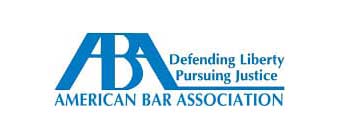Discrimination by employers based on race or sex often gets more publicity than discrimination based on disability. But discrimination based on disability is also a big problem – and appears to be getting worse. If only more was done about this issue – they cannot claim from this unfair treatment when in many cases it can be majorly damaging for them to have the confidence to carry out basic day to day activities. On the upside, disabled people can claim on their downfalls with a TPD insurance claim from companies like Curo Financial. This helps them to cope with their situation especially if they are permanently disabled. However it doesn’t help with the mental scarring someone might feel from abuse in the workplace or anywhere else for that matter.
In this post, we will address five frequently asked questions about this problem.
How frequent is disability discrimination compared to other types?
The Equal Employment Opportunity Commission (EEOC) recently released a report on employment charges handled by the EEOC in 2016. The most frequent type of discrimination was race discrimination, at 35.3 percent of the cases. Disability discrimination was close behind, however, at 30.7 percent.
Disability discrimination was more common among the EEOC cases than sex discrimination, which accounted for 29.4 percent of the cases.
How many cases were there last year?
There were more than 28,000 charges of disability discrimination filed with the EEOC last year. Of those, the EEOC determined that 5,680 were supposed by sufficient evidence, resulting in about $131 million in penalties.
And remember, these numbers are only of cases that were filed with the EEOC. Many cases of discrimination go unreported. If you believe you are being discriminated against, it makes sense to discuss your situation with a knowledgeable employment law attorney.
Is the number of disability-related EEOC charges going up? And if so, why?
Yes, the number of cases is going up. And the percentage of EEOC cases involving disability (nearly 31 percent) is much higher than the percentage of disabled people in the general population (20 percent).
Disabled people also tend to have lower workforce participation rates than people who aren’t disabled. This is not only due to disability discouraging people from seeking employment. It is also because of discrimination by employers and refusal to make reasonable accommodations.
It isn’t entirely clear why the number of EEOC charges related to disability is going up. It may be that disabled people have become more assertive in brining justifiable claims, rather than simply accepting the discrimination.
What types of accommodations do employers have to provide?
An obvious example is making a work setting accessible to people who use wheelchairs. For them, installing a vertical lift in the workplace is necessary. Although the cost of a vertical platform lift varies from manufacturer to manufacturer, employers have an obligation to get one installed that is safe and usable for all employees with a disability. Similarly, many different situations can of course arise in the workplace. Even out of the workplace, to an extent, the employer should provide accessibility. For example, if an employer provides transport, then they should ensure that there is a wheelchair lift for vehicles in order to accommodate any employees using a wheelchair. Things like these are a small ask, and usually within the purview of affordability by any employer. At the end of the day, the question is whether a requested change in the way things are usually done is reasonable.
Employers often argue that accommodating employees or job applicants with disabilities is too difficult or expensive and so would impose an undue hardship on the employer. Determining whether that is the case is a fact-specific matter that depends on the individual case. For example, some companies provide their employees with necessary disability services (similar to the services offered by NDIS coordinators) so that they can work without much difficulty. Nevertheless, the way organizations provide necessary services to disabled employees varies from one organization to another.
What if there were other types of discrimination besides disability discrimination in the same case?
In many cases, people face multiple forms of discrimination. For example, you may be a disabled woman of color who also faces race or sex discrimination. Or perhaps you are a disabled LGBQT person who is subjected to discrimination based partly on disability and partly on sexual preference.
Cases involving multiple discrimination types can be more challenging to investigate than more straightforward cases. They can, however, most certainly be brought.




